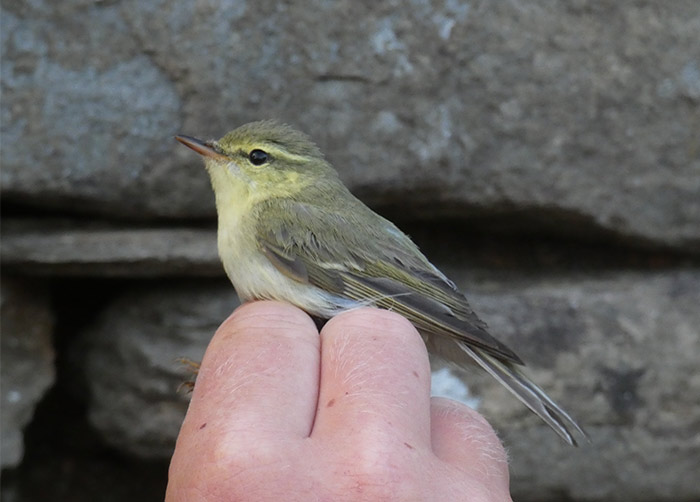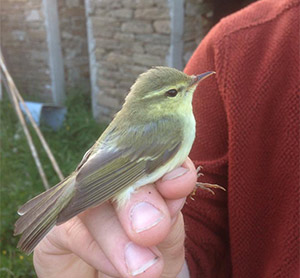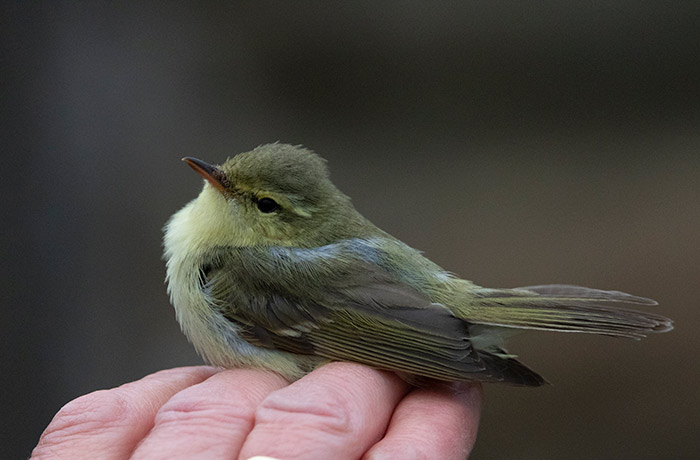Finders-in-the-Field: Green Warbler, North Ronaldsay, May 2020

A couple of quiet days accompanied by good birds on neighbouring islands had left us feeling a little dejected, but the following afternoon would brighten our moods with two singing Marsh Warblers on consecutive days, and a female Red-backed Shrike in the north further heightened our spirits.
Having opened the nets at Holland House things were running along at a steady pace, having caught the earlier mentioned Marsh Warbler as previously mentioned, a Siskin and a couple of fledgling birds.
At about 20:30 I noticed a ‘Phyllosc’ flicking around in the Sycamores adjacent to the house, having heard a Willow Warbler deeper in the Fuchsia jungle I hoped it would later end up in a mist net.
Fast forward an hour and after completing a net round I noticed a small ‘Phyllosc’ in the bottom of the net nearest the house, on approach I could see the underparts and face had a yellowy wash to them, in all honesty I expected it to be a Wood Warbler while I was approaching the bird.

While extracting the bird it became apparent the bird had a wing-bar! At this point you always get a sudden panic of ‘this is something decent, don’t bloody drop it!’
With the bird securely into a bag I wandered back to the ringing hut, phoned down to the observatory, tried Peter Donnelly’s mobile but it never rang (sorry Pete!) and then began to process the bird.
The yellowish wash was probably the most striking thing about the bird, otherwise it mostly seemed to fit the bracket for a bright Greenish Warbler. Which was great, our first spring record for North Ronaldsay and with birds occurring further South it made sense.
Once other staff arrived it became clear they all felt the bird was bright, Gavin using some un-repeatable language at the sight of it.
This prompted a do-over of the biometrics, wing length of 65mm, P2=7/8 and emarginated strongly on the 6th primary. This put it in the frame as a strong candidate for a Green Warbler, but still in the realms of an odd Greenish; so, we continued on the side of caution.
By this point the bird had been held for long enough, we had plenty of photos and even some dropped feathers for DNA once the guys at Aberdeen University are back up and running, so it was released flying off and perching in some Rosa-rugosa before vanishing.
Once the pictures hit social media it was time for people to voice opinions on the bird as they so often do, the consensus was almost as we’d expected, falling on the Green side of things, but all things said and done we’ll be waiting until we have DNA proof before we crack open the drinks, it’s always better left safe than sorry!
A quick thanks to Dante Shepard, Josh Jones, Mark Warren and Steve Stansfield for their assistance with identification.

George Gay
4 June 2020
Share this story




